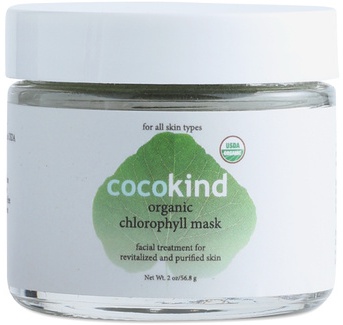
Organic Chlorophyll Mask
Our USDA Organic Chlorophyll Mask is the perfect at-home spa treatment! Chlorophyll (the basis of all plant life!) is rich in antioxidants that are key to healthy and supple skin.
This biomolecule can be found in abundance in Organic Chlorella, Spirulina, and Wheatgrass powders. When applied topically, chlorophyll purifies skin, helps relieve breakouts, and brings out our natural glow!
Uploaded by: loriendove on
Highlights
Alcohol Free
Skim through
| Ingredient name | what-it-does | irr., com. | ID-Rating |
|---|---|---|---|
| Organic Platensis (Spirulina) Powder | |||
| Organic Triticum Aestivum (Wheatgrass) Powder | |||
| Organic Chlorella Pyrenoidosa (Chlorella) Powder | |||
| Cananga Odorata Flower Oil | perfuming | icky |
Cocokind Organic Chlorophyll MaskIngredients explained



Cananga Odorata Flower Oil - icky
Also-called: Ylang Ylang Essential Oil |
What-it-does:
perfuming
Sweet, exotic and floral, it’ no surprise that Ylang Ylang is a popular essential oil. It is coming from the yellow, fragrant flowers of the Cananga tree native to tropical Asia and, similar to other essential oils, it is a chemically complex mixture with several pros and cons.
Unfortunately, these are a bit tricky to pin down as the composition varies largely depending on where it is sourced, how the oil is extracted and the grade of it that is used in the product, but we’ll do our best!
You may also want to take a look at...
| what‑it‑does | perfuming |
Sweet, exotic and floral, it’ no surprise that Ylang Ylang is a popular essential oil. It is coming from the yellow, fragrant flowers of the Cananga tree native to tropical Asia and, similar to other essential oils, it is a chemically complex mixture with several pros and cons. Unfortunately, these are a bit tricky to pin down as the composition varies largely depending on where it is so
[more]





